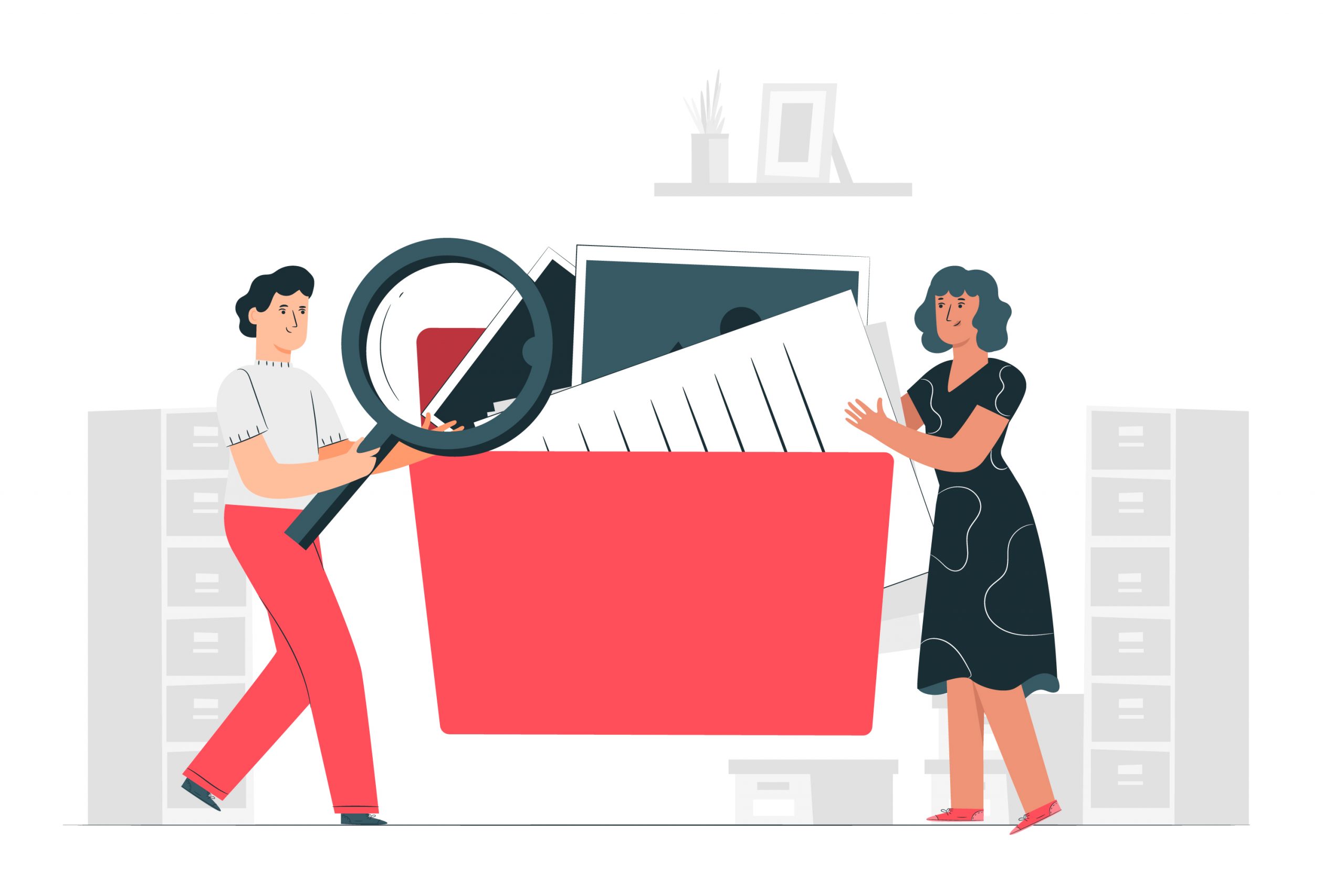Home Decor
Understanding Lifespan: When Do Pipes Start Leaking?
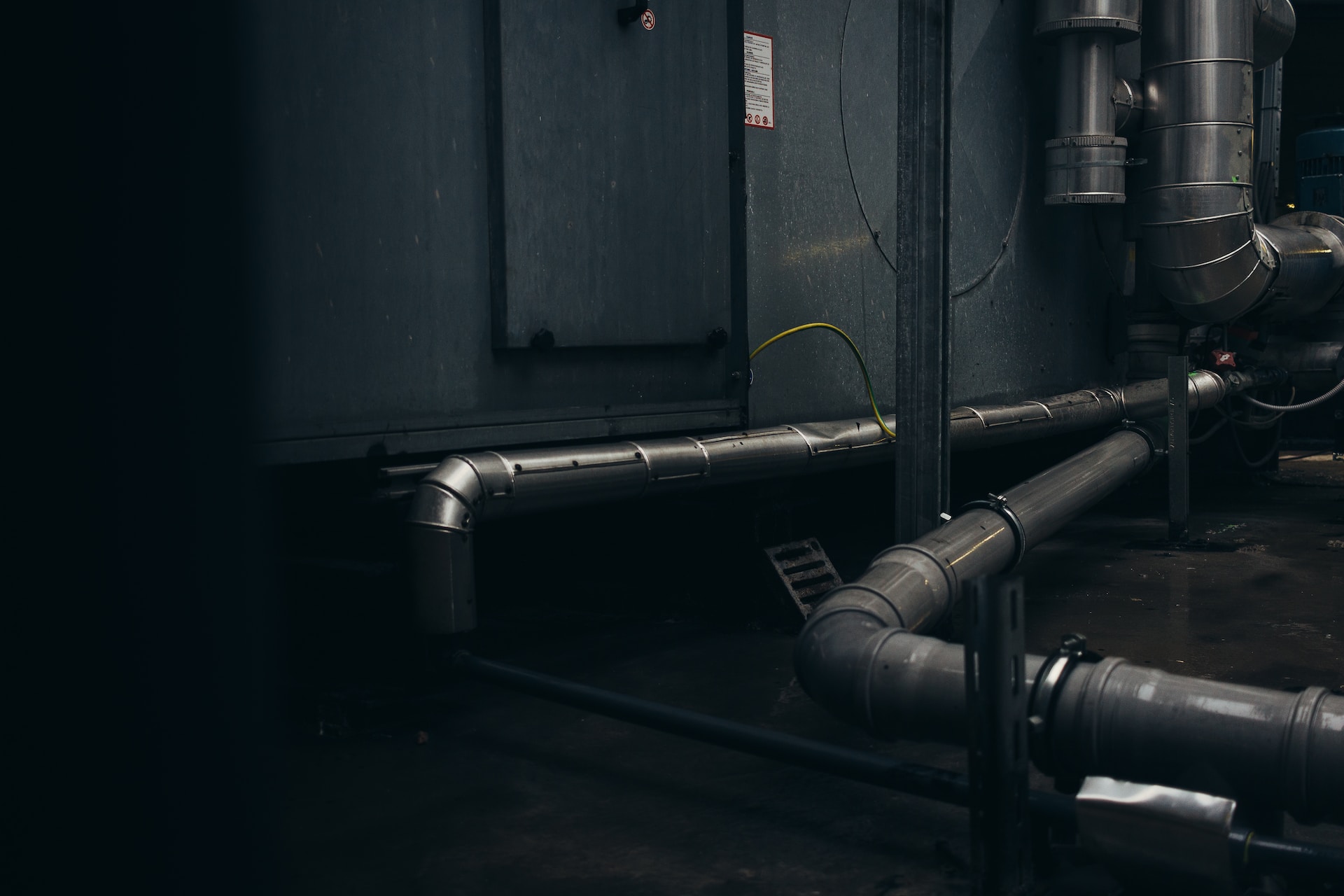
In every home, office building, or industrial space, a labyrinth of pipes ensures the flow of water, gas, and sometimes waste. But like all things, pipes have a finite lifespan. Knowing when and why pipes begin to leak can be crucial in maintaining the structural health of a building and preventing costly water damage or hazards. This article delves into the intricate life of a pipe, aiming to shed light on the question: when do pipes start leaking?
Reasons Behind Pipes Start Leaking and Smart Solutions
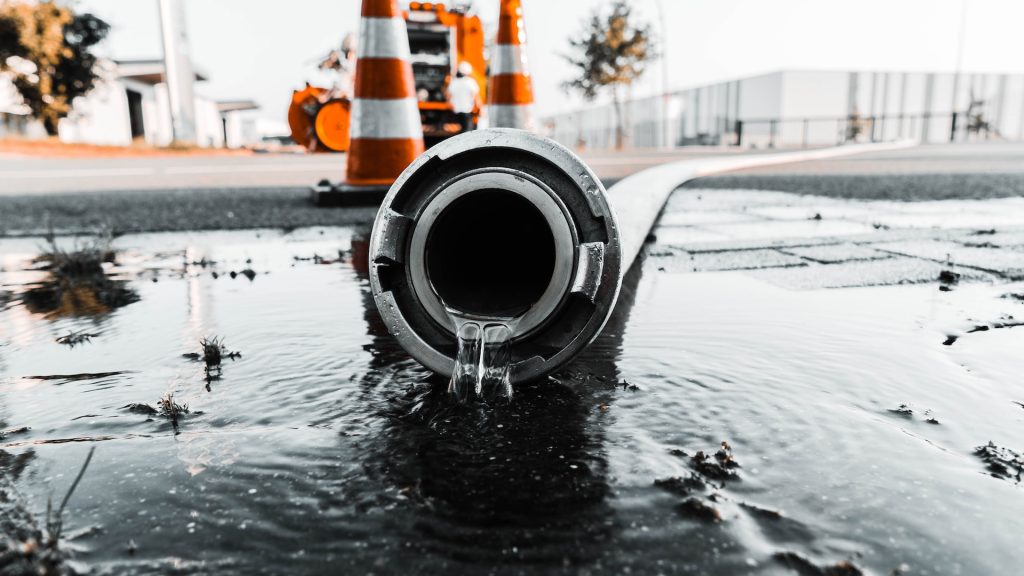
1. Material Matters: Lifespan of Different Pipes
The integrity and longevity of any piping system largely hinge on the choice of material. Various materials offer distinct benefits, but they also come with unique vulnerabilities:
Galvanized Steel
Heralded for its robustness in the past, galvanized steel pipes have been the backbone of many older plumbing systems. Their lifespan typically ranges between 20-50 years. The primary drawback of this material is the eventual erosion of its protective galvanized layer. As this protective layer diminishes, the pipe becomes susceptible to oxidation, leading to rust formation. This rust can compromise the pipe’s integrity, causing leaks and contaminating the water flow.
Copper
Celebrated for its durability and reliability, copper has become a popular choice in contemporary home construction. With a lifespan stretching from 50 to 70 years, these pipes are inherently resistant to corrosion. However, they’re not entirely invulnerable. Prolonged exposure to water with high acidic content can weaken copper, causing it to deteriorate prematurely.
PVC
Short for Polyvinyl Chloride, PVC pipes are a favorite for waste and drainage systems due to their corrosion-resistant nature. Generally, they promise a service life of 25-40 years. While they defy the rusting problems seen in metal pipes, age, and environmental factors can make PVC pipes brittle. As they lose flexibility, these pipes can crack, especially under physical pressure or extreme temperature fluctuations.
PEX
Standing for Cross-linked Polyethylene, PEX pipes are a testament to advancements in plumbing materials. Their flexibility makes them easy to install and resistant to cold temperatures. They are also known for resisting the build-up of scale, which can impede water flow. Proper care and maintenance can see PEX pipes serving reliably for more than 50 years.
2. Environmental Stressors: How Nature Influences Pipe Durability?
The environment surrounding a pipe significantly contributes to its longevity, often introducing unforeseen challenges that can strain and test its resilience.
Water Quality
The water flowing through the pipes is not merely a benign entity; its characteristics can actively affect the pipe’s interior. Especially with hard water, which boasts an elevated mineral content primarily composed of calcium and magnesium, there’s a risk of scale deposition. As these minerals precipitate and accumulate on the pipe’s inner walls, they form hard, crusty deposits known as scales. Over time, these buildups can narrow the pipe, leading to blockages. Additionally, they can boost the internal pressure, escalating the odds of leakage.
Ground Movement
The very earth on which structures are built is not as stationary as one might assume. Factors like earthquakes, heavy traffic vibrations, or the disruptive force of nearby construction can introduce ground disturbances. Such movements, subtle or pronounced, can put undue pressure on buried pipes or cause them to misalign. In extreme cases, the pipes might rupture, leading to significant leakage and the need for urgent repairs.
Temperature Variations
Pipes, like many materials, respond to temperature changes by expanding when it’s hot and contracting in colder conditions. In regions where temperatures swing between extremes, this cyclical expansion and contraction can strain the pipes. Over time, this repeated stress can lead to the development of cracks or the weakening of joints. When winter comes, the water inside might freeze and expand, exerting further pressure and potentially leading to splits or bursts.
3. Usage and Maintenance: Our Role in Pipe Longevity
Just as our daily habits and preventative measures impact our health, the way we use and care for our plumbing systems can dictate their effectiveness and durability. Human intervention, or lack thereof, plays a pivotal role in how well pipes perform over time.
High Pressure
Imagine our vascular system under the constant strain of high blood pressure. Similarly, pipes subjected to relentless high water pressure are at risk. This undue stress on the pipe’s inner walls and joints can hasten wear and tear, amplifying the chances of leaks or bursts. Over time, these conditions can significantly shorten a pipe’s service life, leading to frequent repairs or replacements.
Chemical Drain Cleaners
In our bid to achieve quick fixes for clogs, many often turn to potent chemical drain cleaners. While they might offer a temporary solution, their aggressive nature can be detrimental to pipes. The harsh chemicals in these solutions can corrode or weaken the pipe material, especially if used regularly. Over time, this can render the pipes more susceptible to cracks, leaks, and other failures.
Inspections and Maintenance
Proactivity is the key to longevity when it comes to plumbing. Regularly scheduled inspections can unveil budding issues, allowing for timely interventions. Furthermore, understanding the environment and water quality in an area can guide beneficial actions. For instance, the addition of water softeners in regions plagued by hard water can minimize scale buildup, ensuring smoother water flow and reduced wear on pipes. Similarly, insulating pipes in colder climates can fend off freezing-related damages.
4. The Telltale Signs of Aging Pipes
Every homeowner should be equipped with the knowledge of recognizing when their plumbing system begins to show its age. Like most things, pipes aren’t immune to the ravages of time, and being cognizant of their health can save a lot in terms of time, money, and inconvenience. Here are some clear indicators that your pipes might be reaching the end of their service life:
Discoloration
One of the most immediate signs of an aging pipe is the color of the water it dispenses. If you turn on a faucet and are greeted with brown or yellowish water, it’s a strong indication of rust formation inside the pipes. Consistent rusting can compromise the pipe’s integrity, and while the discoloration is a cosmetic concern, it can be a precursor to more serious problems. It’s essential to address this issue promptly, as rusting can escalate and lead to leaks or even pipe bursts.
Reduced Water Pressure
A gentle flow from the shower or faucet might be pleasant for some, but a sudden and unexpected drop in water pressure is a concern. This could be due to several reasons, including a leak somewhere in the plumbing system that’s diverting the water flow. Another possibility is a blockage, where sediment or scale has built up over time, restricting the water’s pathway. Ignoring reduced water pressure can exacerbate the problem, leading to complete blockages or significant leaks that can damage property.
Frequent Clogs
The occasional blockage is a common plumbing issue, but if clogs become a recurrent theme in your household, it might be signaling an underlying problem. Persistent clogs could be indicative of internal scaling, where mineral deposits line the pipe’s interior, narrowing its diameter. This not only impedes the flow but stresses the pipe, making it more prone to damage. Another concern might be internal damage or misalignment in the pipe sections, leading to frequent blockages.
our plumbing systems often communicate their health status through subtle (and sometimes not-so-subtle) signals. By staying attuned to these signs and acting promptly, homeowners can ensure the longevity of their plumbing systems and avoid the pitfalls of neglecting aging pipes. Regular professional check-ups can further ensure that your pipes remain in optimal condition and serve you reliably for years to come.
Conclusion
while the lifespan of a pipe largely depends on its material, external factors, and human intervention play a crucial role in when pipes might start leaking. Being proactive, understanding your piping system, and regular maintenance can save homeowners and business proprietors time, money, and the frustration of dealing with leaks.
FAQs
Water discoloration, especially brown or yellowish hues, often suggests rust formation inside pipes. Over time, as pipes age, particularly metal ones, they can corrode and introduce rust particles into the water flow. It’s crucial to address this promptly as it can lead to more significant issues like leaks or bursts.
A sudden and unexpected drop in water pressure can be a result of a leak or blockage within the plumbing system. Aging pipes can develop cracks or leaks, or accumulate sediment and scale that restrict water flow, resulting in reduced pressure.
Regular clogs can be a sign of internal scaling where mineral deposits build up inside the pipe. This not only narrows the pipe’s diameter but also stresses it, making it susceptible to damage. Persistent clogs could also suggest internal damage or misalignment.
Discolored water, especially if brown or yellow, is a primary indicator. If rusting is suspected, it’s essential to have a professional inspection to assess the extent of the problem and recommend solutions.
Yes, aging pipes, especially those rusting or corroding, can release particles into the water. This can affect the water’s taste, color, and safety. Regular checks and pipe maintenance are vital to ensure clean water.
Professional plumbing inspections are recommended every couple of years. However, if you notice any signs like discolored water, reduced pressure, or frequent clogs, seek an inspection immediately.
Yes, installing water softeners in areas with hard water, insulating pipes in cold regions, and avoiding harsh chemical drain cleaners can help prolong a pipe’s service life.
Galvanized steel pipes are particularly vulnerable to rusting due to the erosion of their protective galvanized layer over time.
Absolutely. Repeated expansion and contraction from temperature variations can strain pipes, leading to cracks or weakening of joints, especially in regions with extreme temperature changes.
Installing a water softener can help combat the effects of hard water. It replaces calcium and magnesium ions with sodium ions, preventing scale buildup and ensuring smoother water flow.

Home Decor
Airport Wellness Corners Where Fitness Equipment Movers Los Angeles Keep Shift Changes Smooth

Airports run on clockwork and caffeine, so tiny wellness corners can feel like secret cheat codes for tired shoulders. When a shift flips, bodies do not magically reset, so a few smart stations with bikes, stretch tools, and compact strength gear can help. Midway through the plan sits this link as a practical reference https://beezeemovers.com/fitness-equipment-movers-in-los-angeles and it points to the kind of specialized handling that keeps schedules intact. The goal is simple: calm set ups, fast swaps, and spaces that feel welcoming, not like a loud showroom. It also helps to treat the corner like a lounge, not a punishment for skipping leg day. A card with three quick moves and a timer helps, so it stays easy at 5 a m. Even a small fan and calming scent can shift the mood.
How Can A Terminal Make Recovery Feel Effortless
Think of it like adding a pit stop to a long race, except nobody is wearing a bib and the finish line keeps moving. A narrow break room can still host a foldable bike, resistance bands, and a mat that does not slide, as long as access paths stay clear and noise stays low. Placement matters, too, as staff will use what they can reach without negotiating carts, doors, and security lanes. A simple rule works: if it takes more than a minute to start, it will collect dust. If the space sits near a break table, even better. People will stretch while coffee cools. And if the gear looks clean and simple, it feels safe to touch, and that matters.
The Quiet Logistics Behind The Curtain
Moving heavy gym gear through secure corridors is less about brute force and more about etiquette. Routes are timed around cleaning windows, baggage surges, and that brief calm when a gate finally exhales. Protective wraps, floor runners, and clean gloves keep the vibe professional, and the result is a set up that feels almost invisible.
- Schedule roll ins between flights and shift peaks.
- Use soft wheels that respect polished terminal floors.
- Keep fasteners bagged and labeled for quick reassembly.
- Test clearances for doors, ramps, and tight turns.
After the gear lands, a quick wipe down and a sanity check on bolts keeps everything ready for real use, not just photos.
What Makes These Micro Gyms Actually Get Used
It is not the fanciest machine, it is the feeling. Staff lean into stations that offer relief without asking for a full outfit change or a thirty-minute commitment. Add signage that reads like a friendly nudge, not a lecture, and suddenly the corner becomes part of the routine. Even better, rotate one small item monthly so the space stays fresh without becoming clutter. One more trick is lighting. Harsh fluorescents make everything feel like an inspection, while warmer bulbs make the corner feel like permission. Add a small hook for lanyards and keys, and the experience stops being awkward.
Shift Changes End With Less Ache And More Air
When the swap happens, the room should invite a reset in the same way a good playlist smooths a long drive. A couple of minutes on a compact cardio unit, a stretch sequence, and a sip of water can turn grumpy fatigue into workable calm. And because airports never sleep, the best layouts favor low sound, clean lines, and quick shutdowns so the next crew inherits a space that feels so cared for. Done right, the corner becomes a morale boost that travels crew to crew. It does not replace sleep, but it can save the last hour of a shift from feeling endless. That is the quiet win: a healthier handoff, done with respect for time and bodies.
Home Decor
Keep the Heat On: Why November Is the Smartest Month for Boiler and Heating Checks
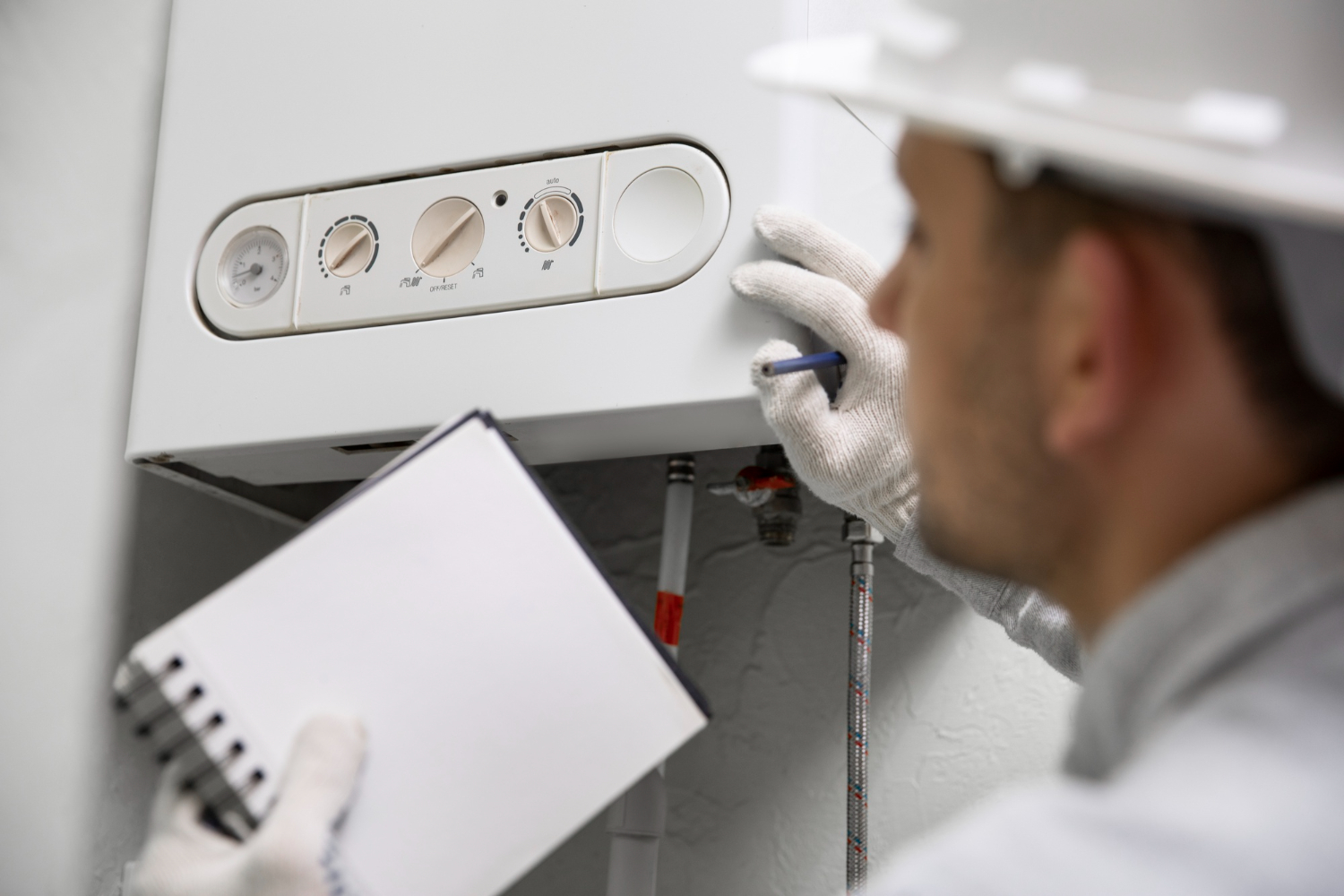
As the nights draw in and the temperature drops, it’s officially boiler season. November is when many households across the UK switch their heating back on for the first time in months and realise something’s not quite right. Maybe the radiators are slow to heat up, the water’s lukewarm, or the boiler makes a strange noise.
That’s exactly why November is the best time to arrange a boiler service and make sure your heating and hot water system is ready for winter. A quick check now can prevent breakdowns, improve efficiency, and keep your home warm when you need it most.
Why November Is the Perfect Month to Book
1. The Weather’s Cool but Not Freezing Yet
November sits in that ideal middle ground between mild autumn and freezing winter. Engineers tend to be easier to book, and you can have your system checked before demand peaks. Once December hits, call-outs start to surge, and getting an appointment can take longer. Taking care of it now means you’ll be prepared for the colder weather ahead.
2. Catch Problems Early
During summer, your boiler spends months barely ticking over, providing only hot water. That downtime might seem harmless, but it can allow parts to seize or minor faults to develop unnoticed. When the heating finally comes back on, those little issues often turn into sudden faults.
A check in November helps to identify problems like low pressure, sticky valves, or weak pumps before they cause bigger headaches. It’s the perfect time to give your boiler a quick health check so it can run reliably all winter.
3. Improve Efficiency and Lower Energy Bills
An efficient heating system can make a noticeable difference to your energy costs. When a boiler is properly maintained, it doesn’t need to work as hard to reach the same temperature, which means it uses less gas. During a routine visit, the engineer will test performance, clean the internal parts, and make sure everything’s running as efficiently as possible.
Even simple adjustments, like balancing radiators or topping up pressure, can help your heating work faster and more evenly. A well-maintained system also produces less wear on parts, reducing the chance of breakdowns later in the season.
4. Keep Your Home and Family Safe
A yearly check isn’t just about comfort, it’s also about safety. Boilers that haven’t been serviced in a while can become a hidden hazard, particularly if the flue, seals, or ventilation aren’t working as they should. A trained engineer will inspect these areas carefully and test for carbon monoxide leaks.
Carbon monoxide is invisible and odourless, so prevention is key. Making sure your system is running safely gives peace of mind that your home is protected all winter.
5. Keep Your Warranty and Insurance Valid
It’s easy to forget that most boiler warranties depend on regular servicing. If you skip a year, your cover could lapse without you realising. The same is true for many home insurance policies, which often expect proof of maintenance. Booking your annual service in November helps you stay on top of both, so you’re not caught out if something does go wrong later.
Keeping a simple service record is a smart habit that protects both your warranty and your wallet.
What’s Included in a Professional Check
If you’ve never seen what happens during a boiler inspection, it’s simpler than you might think. A professional engineer will:
- Inspect the boiler and surrounding pipework for leaks or corrosion
- Check the flue to make sure it’s safely removing waste gases
- Clean the burner, heat exchanger and ignition components
- Test safety controls and carbon monoxide levels
- Confirm the correct gas pressure and overall performance
The whole process usually takes under an hour, but it can make a big difference to the way your system performs throughout winter.
Simple Checks You Can Do Yourself
You don’t need to wait for an engineer to do a few quick checks around the house:
- Look at the pressure gauge; it should read between 1 and 1.5 bar when cold, or within the green zone if your boiler uses colour indicators.
- Bleed radiators if they have cold spots to remove trapped air
- Turn your heating on for a short while to make sure everything is working smoothly
- Check for any leaks or damp patches around visible pipework
- Listen for any rattling or whistling noises that might indicate trapped air or sludge
These small steps can keep your system running efficiently and help you spot potential issues early. If something seems unusual, note it down and mention it when you book your boiler service.
Why an Annual Check Makes Sense
Booking a service each year has long-term benefits. It helps you avoid the inconvenience of a sudden breakdown, but it also improves overall system performance. Regular maintenance keeps parts moving freely, improves safety checks, and ensures your boiler runs efficiently, which can lower energy consumption over time.
A well-looked-after system can last several years longer than one that’s neglected. It’s also better for the environment, as efficient heating uses less energy and reduces emissions.
Don’t Wait for the Cold Snap
It’s easy to delay a boiler check until something stops working, but by then you’ll be competing with everyone else for appointments. November gives you the chance to stay ahead, book a convenient time, and make sure your heating system is fully ready for winter.
A short visit from a qualified engineer now means no unexpected cold mornings, no last-minute panic, and a warm, comfortable home for the months ahead. It’s a small job that makes a big difference to how your home feels.
Home Decor
How to Choose Strata Painting Services in London

London is home to countless high-rise apartments, office complexes, and historic buildings, all requiring regular upkeep to maintain their charm and durability. One crucial aspect of property maintenance is strata painting, which ensures interior and exterior shared spaces remain visually appealing and well-protected.
Unlike standard painting jobs, strata painting involves special coatings, weatherproofing, and compliance with strict safety regulations to meet the needs of multi-unit buildings.
With London’s frequent rainfall, pollution, and varying architectural styles, choosing a reliable strata painting service isn’t just about aesthetics—it’s about long-term protection and value preservation.
Whether it’s a modern glass-covered skyscraper in Canary Wharf or a centuries-old residential complex in Kensington, the right painting professionals can help enhance curb appeal while ensuring structural integrity.
What Does Mean By Strata Painting?

Strata Painting is a specialized painting service designed for multi-unit properties like apartment buildings, townhouses, and commercial complexes. It ensures that shared areas such as hallways, staircases, lobbies, and exteriors are well-maintained and protected against weather damage.
For instance, in central London, high-rise buildings often require weatherproof coatings to withstand frequent rain and pollution. In contrast, heritage buildings in Westminster may need specialized paints to preserve their original look while complying with heritage protection laws. This makes strata painting essential for maintaining property aesthetics, longevity, and value.
Key Factors of Choosing Strata Painting Services in London

1. Use of Drones for Building Inspections Before Painting
Drones have revolutionized building inspections by providing aerial views of high-rise strata properties, allowing for detailed assessments of structural damage, peeling paint, and moisture penetration. This reduces the need for scaffolding-based manual inspections, cutting costs and improving safety. According to a 2023 study, over 40% of London’s property management firms have integrated drone inspections for maintenance planning, proving its growing popularity in the industry.
2. Use of Biodegradable and Non-Toxic Paints
With stricter UK environmental regulations, London-based strata painting companies are shifting towards biodegradable, non-toxic, and low-VOC (Volatile Organic Compound) paints. These eco-friendly options improve indoor air quality while minimizing harmful chemical emissions. Reports indicate that over 60% of newly developed residential buildings in London now use low-VOC paints to meet sustainability standards.
3. Green Certifications for Environmentally Responsible Contractors
Many strata painting contractors in London seek BREEAM (Building Research Establishment Environmental Assessment Method) and LEED (Leadership in Energy and Environmental Design) certifications to showcase their commitment to sustainability. Buildings with BREEAM-certified painting solutions have been shown to reduce energy consumption by up to 25% annually, making them an attractive option for property developers and management companies.
4. Self-Cleaning and Heat-Reflective Coatings
With London’s variable climate, self-cleaning coatings have gained traction due to their ability to reduce dirt accumulation and grime buildup on painted surfaces. These coatings, often made with titanium dioxide-based formulas, break down organic dirt through photocatalysis. Similarly, heat-reflective coatings help reduce indoor cooling costs in London’s commercial buildings by reflecting UV rays. Studies indicate that heat-reflective paints can lower interior temperatures by up to 5°C, cutting energy expenses by 15-20% annually.
5. 3D Visualization Tools for Previewing Color Schemes
Choosing the right color scheme is a crucial decision in strata painting. 3D visualization tools allow property owners, managers, and residents to preview multiple color options and finish in real-time before painting begins. These tools, widely used by top painting contractors in London, help reduce color mismatches, improve client satisfaction, and streamline the decision-making process.
6. Automated Painting Equipment
Automation is transforming the strata painting industry by improving efficiency, safety, and consistency. High-rise buildings in London are increasingly adopting robotic painting systems that use precision-controlled spray mechanisms to coat large surfaces evenly. These systems reduce labor costs by up to 30% and enhance safety by minimizing human exposure to hazardous heights and harsh weather conditions.
7. Integration of Solar-Reflective Coatings to Reduce Energy Consumption
Solar-reflective coatings are gaining popularity in London’s high-rise and commercial strata projects. These coatings are designed to reflect UV radiation, preventing excessive heat absorption and reducing the reliance on air conditioning. Studies suggest that buildings treated with solar-reflective coatings can cut cooling costs by up to 20%, particularly in densely populated areas like Canary Wharf and Central London.
8. Smart Coatings with Antimicrobial Properties
Post-pandemic hygiene concerns have led to the widespread adoption of antimicrobial coatings in London’s residential and commercial strata properties. These advanced coatings inhibit bacterial and mold growth, making hallways, lobbies, and shared areas more hygienic. Popular in hospitals and commercial offices, these coatings are now being used in luxury residential complexes to improve indoor air quality and overall sanitation.
9. Water-Based Paints Instead of Oil-Based Solutions
Switching to water-based paints has significantly reduced pollution and carbon footprints in London’s painting industry. These paints dry faster, emit fewer chemicals, and are easier to clean up, making them a preferred choice for strata projects aiming to comply with environmental regulations. Data from the UK Green Building Council (UKGBC) indicates that over 70% of professional painting projects in London now use water-based coatings, marking a shift towards greener practices.
10. Recycling and Waste Reduction Initiatives
Many strata painting contractors now offer paint can recycling programs and waste reduction initiatives. Several London-based firms partner with recycling facilities to repurpose leftover paint, reducing landfill waste and promoting sustainability. This trend aligns with the UK government’s 2030 sustainability goals, pushing more companies to embrace eco-conscious disposal practices.
11. Automated Painting Equipment
Automation is transforming the strata painting industry by improving efficiency, safety, and consistency. High-rise buildings in London are increasingly adopting robotic painting systems that use precision-controlled spray mechanisms to coat large surfaces evenly. These systems reduce labor costs by up to 30% and enhance safety by minimizing human exposure to hazardous heights and harsh weather conditions.
Common Challenges for Strata Painters in London
- Weather conditions: London’s high humidity and frequent rain require special coatings. Unpredictable weather patterns can delay painting schedules and increase drying time, making it essential to choose weather-resistant paints.
- Regulatory compliance: Following UK Work at Height Regulations 2005 and health and safety laws is mandatory. Additional permits may be required for buildings located in heritage areas or conservation zones.
- Minimal disruption: Painters must work efficiently around residents and businesses. This means planning schedules to avoid peak hours, working in phases, and using quick-drying, low-odor paints to reduce inconvenience.
- Access restrictions: High-rise and multi-story buildings require specialized access techniques such as rope access, scaffolding, or hydraulic lifts. Ensuring compliance with safety regulations is critical for worker safety.
- Specialized Coatings and Compliance: Buildings in London may require fire-retardant coatings, anti-mold treatments, or UV-resistant paints to comply with building safety and environmental standards.
- Surface Preparations: Addressing existing cracks, leaks, or damaged surfaces before painting begins is vital for long-lasting results. This may involve power washing, applying primers, and fixing structural defects.
- Tenant Communication: Informing tenants about timelines and expected disruptions is key to maintaining a positive relationship. Property managers must provide clear notices regarding paint odors, restricted access areas, and safety precautions to ensure cooperation.
- Logistics and Scheduling: Coordinating painting schedules with property managers and tenants is crucial to prevent delays. Large-scale projects require meticulous project management to allocate labor and resources effectively.
- Budget Constraints: Strata painting projects often operate on tight budgets. Proper cost estimation, avoiding hidden fees, and choosing cost-effective yet durable paint solutions can help balance quality and affordability.
-

 Business3 years ago
Business3 years agoThe Most Efficient Ways To Use The Best 6 Business Keynote Presentations
-
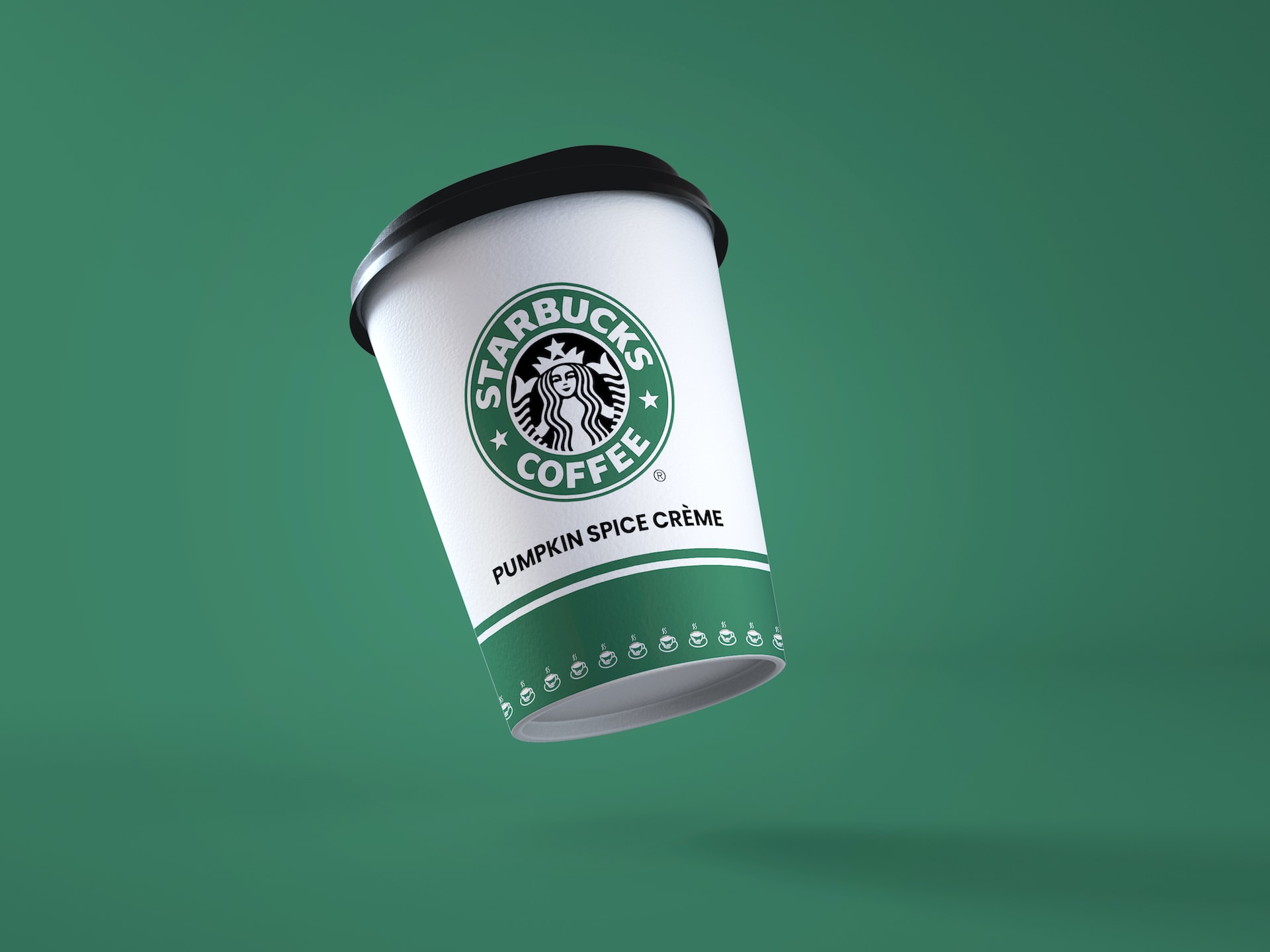
 Apps and Software1 year ago
Apps and Software1 year agoStarbucks Partner Hours App Login Guide
-

 Entertainment1 year ago
Entertainment1 year ago15 Best IPTV Service Providers in the UK 2025
-

 Tech3 years ago
Tech3 years agoIs Forecasting A Part Of Data Science?
-

 Economy4 years ago
Economy4 years agoWhat does it mean to Dream About Pennies?
-

 Entertainment12 months ago
Entertainment12 months ago10 Best Free Video Player Apps For Apple TV
-

 Entertainment3 years ago
Entertainment3 years agoHow To Enhance Your Viewing with Video Subtitle Support
-

 Food & Drinks1 year ago
Food & Drinks1 year agoTop 20 Low-Calorie Healthiest Biscuits and Cookies for Weight Loss in 2025




























